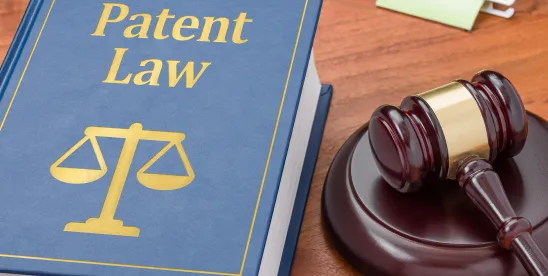In Maxell, Ltd. v. Amperex Technology Limited, 2023-1194 (Fed. Cir. Mar. 6, 2024), this case the Federal Circuit reaffirms that a patent claim that includes narrowing limitations requiring only some elements of a Markush group recited in the same claim are not indefinite under Section 112 so long as the claim, when read as a whole, is internally consistent and supported by the specification.
Background
After patent licensing negotiations fell apart between Amperex and Maxell, Amperex filed suit in the U.S. District Court for the District of New Jersey against Maxell seeking a declaration that it did not infringe Maxell’s patents, including U.S. Patent No. 9,077,035 (the “’035 patent”). In response, Maxell sued Amperex for patent infringement in U.S. District Court for the Western District of Texas. The cases were consolidated.
The ’035 patent’s claims a lithium-ion battery with at least two lithium-containing transition metal oxides, represented by a relationship that include a transition element M1. Most relevant are two limitations stating the requirements for the element M1:(i) “wherein M1 represents at least one transition metal element selected from Co [cobalt], Ni [nickel], and Mn [manganese],” and (ii) “wherein the content of Co in the transition metal M1 of the formulae (1) and (2) is from 30% by mole to 100% by mole[.]”
The district court held this claim language was indefinite on the ground that the two limitations contradicted each other, and entered partial final judgment in favor of Amperex. Specifically, the district court found claim 1’s plain language recites that “the first part of the claim recites a Markush group where cobalt is not necessarily required to be in the claimed compound while the second part of the claim recites cobalt is necessarily required.” The court stated that “[f]or an element to simultaneously be optional and required is a contradiction on its face.”
Maxell timely appealed.
Issue
Whether a claim limitation that requires some of the elements of a Markush group that is recited in the same claim contradicts the implication of the Markush group that its stated elements are conditionally optional, and thus renders the claim indefinite under 35 U.S.C. § 112 ¶ 2.
Holding
A claim limitation that requires some elements from a Markush group that is recited in the same claim neither contradicts the Markush group limitation nor renders the claim indefinite.
Reasoning
The Federal Circuit addressed the district court’s rationale for invalidating the ’035 patent as indefinite, finding this rationale incorrect not because a contradiction in a claim cannot produce indefiniteness, but rather, because there was no contradiction in the claim language. The Federal Circuit found that the limitations set out two separate requirements and that it was “perfectly possible for a transition metal element to meet both requirements.” The Federal Circuit noted that the location of the potentially contradictory language, i.e., recited in separate limitations as opposed to appearing in a single limitation, made no difference. Furthermore, in seeking to understand the scope of an invention, a reader is charged with “knowing not only that any particular claim language must ‘be read in the context of the full claim,’ but also that ‘all limitations of a claim must be considered in deciding what invention is defined.”
The Federal Circuit acknowledged that there may have been a more artful way of stating the two requirements within the same claim. However, this does not mean that there was a contradiction between the two limitations. Moreover, the prosecution history provided an explanation for the placement of the limitations; namely, the M1 term was added to overcome a prior art reference. Altogether these types of amendments to the claims, i.e., a narrowing of a Markush group via further limitations, are common practice in the prosecution of patents, especially when attempting to overcome prior art cited against the claims.
The Federal Circuit also addressed the district court’s explanation that limitation [c] granted options as to the makeup of M1 that are then taken back by limitation [f]. The Federal Circuit noted that claim limitations do not grant options, but instead state requirements, i.e., conditions that must be met for a product or process to come within the “protected zone of [the claims’] exclusivity.”
The Federal Circuit found support for its finding that there was no contradiction in the fact that dependent claims ordinarily are meant to add narrowing limitations to the independent claims to which they refer. The Federal Circuit noted that in previous cases the court recognized that narrowing does not imply contradiction. Even Amperex conceded that there would be no contradiction if limitation [f] were recited in a dependent claim as opposed to independent claim 1. But the Federal Circuit noted there is no difference with regard to the indefiniteness inquiry between a narrowing limitation recited in a dependent claim and one placed in the independent claim itself, as is the case with the ’035 patent.
Lastly, the Federal Circuit addressed the support offered by Amperex for invalidity that the contrast between the claim language defining M1 and the claim language defining the M2 term, which clearly requires magnesium (M2 represents Mg and at least one metal element from the group consisting of Ti, Zr, Ge, Nb, Al, and Sn). The Federal Circuit gave no merit to the suggestion that a relevant artisan would be irremediably uncertain about the scope of M1 because if the patentee actually meant to cover a cobalt-requiring M1, it would have written the claim by using the language defining M2. First, the Federal Circuit rejected this suggestion because the district court’s sole basis for holding the claims indefinite was that the claim limitations created a contradiction, but the suggestion put forth by Amperex does not establish a contradiction. Second, the Federal Circuit found the language defining M1 is clear, and it is not overridden in any way by the patent’s specification or the prosecution history. A relevant reader would not be confused by the use of different language for the compositions of M1 and M2. Instead, one would not expect a skilled artisan to perform a simple borrowing of the M2 claim-language formulation for M1.
In view of the foregoing analysis, the Federal Circuit reversed the district court’s judgment and remanded the case for further proceedings.



 />i
/>i

